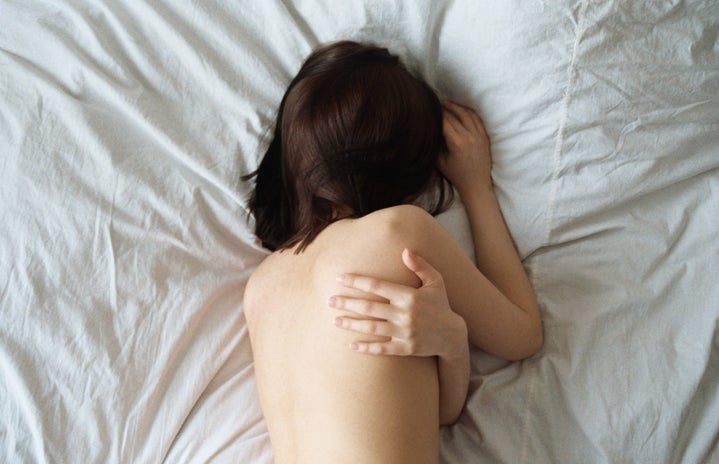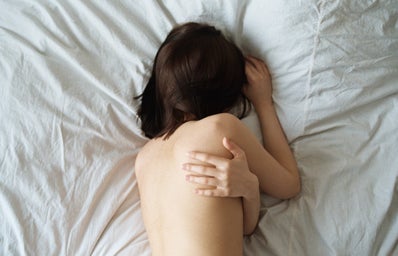It’s a week before your period, and by now, you know the drill: bloating, fatigue, irritability and aches and pains. Premenstrual syndrome (PMS) is common and normal, but that doesn’t make it any more fun. PMS is the umbrella term for a variety of symptoms that happen before your period, and their severity depends on the person. Luckily, these symptoms usually stop at the onset of your period. According to the American College of Obstetricians and Gynecologists, at least 85 percent of women experience one or more PMS symptom as a part of their monthly cycle. So when you know your period is about to hit, try these collegiette and expert recommended tips to fight these unpleasant symptoms!
1. Get moving
When you feel tired and irritable, exercising might be the last thing you feel like doing. But according to Mary Clarkin, RN a Cleveland-based women’s health nurse practitioner, the endorphins produced by exercise can be hugely beneficial for PMS symptoms like cramps, aches and pains and even irritability. Clarkin says, “[Exercising] is also a good distraction.” Emma, a collegiette at Kenyon College, agrees: “I get cramps as part of my PMS. I start exercising more and doing more yoga because it helps.” Yoga, simple stretching or even a quick jog are all easy ways to get your heart pumping and your endorphins flowing.
2. Pop a painkiller
Many girls report various muscle aches or cramping before their periods. If alternative methods of pain relief such as exercising are not cutting it for you, then cut to the chase and take a painkiller. “When I get back aches, I take a few Advil. It usually helps it right away. I usually get backaches the day before my period, so then I know it’s a signal my period is going to get here soon,” says Vanessa, a collegiette at Johns Hopkins. Kathy Hahn, a community pharmacist in Oregon, recommends taking an NSAID (non-steroidal anti-inflammatory drug) like ibuprofen to dull headaches, backaches and muscle pain.
Emma also relies on Advil for headaches, which she supplements with hot washcloths on her forehead and drinking green tea. For cramps, she recommends naproxen (marketed as Aleve) because it lasts longer than other painkillers. You can also take Midol, which combines pain relief with caffeine and an anti-diuretic to beat bloating. If your painkiller isn’t working fast enough or if you’d rather take the natural route, many collegiettes use a heating pad or hot water bottle to relieve pain. You can find these at your local drug store.
3. Watch what you eat
One of the most common PMS symptoms? Your jeans might feel a little tighter than normal. Bloating is unpleasant, but can be reduced by watching what you eat and drinking plenty of water. According to Diane Blahut, a clinical dietician at Johns Hopkins Nutrition Clinic in Baltimore, you should avoid carbonated drinks, cruciferous veggies (like broccoli and cauliflower), beans, salty foods and gum if you’re PMSing and prone to bloating. These foods can make bloating worse.
What to eat? Bananas, pineapple, ginger, peppermint and oatmeal are all known for their bloat-busting qualities. “I always get bloated right before my period,” says Ally, a student at Johns Hopkins. “I definitely cut out soda and add more fruit to my diet. Bloating for me is kind of unavoidable, but these little changes I do help.” Avoiding foods that make you bloat can also be helpful if you experience digestive symptoms like diarrhea and constipation before your period.
4. Give in to your cravings
Some girls report irritability and mood swings right before their period. If this happens for you too, try to treat yourself. “I definitely get moody. The best cure? Chocolate!” says Gaby, a student at Johns Hopkins. Alexandra, a collegiette at University of California, Los Angeles agrees: if you’re in a bad mood, don’t fight it. “In order to fight the symptoms of PMS I try and make sure to take Advil, drink tea, treat myself to small quantities of chocolate and annihilate anyone who insinuates that my feelings and emotions (and how extreme they may be) are motivated by [my PMS!],” she laughs. For Emma, a student at Purdue University, PMS is going to happen no matter what, so she goes with the flow and just treats her body. “Food cravings? I just give in. Irritability? I get irritable. Mood swings? I let them swing. It’s not going to hurt if I eat a little extra dessert once a month,” she says.
Bottom line? PMS isn’t fun, so it’s OK to indulge a little! You might want to have a stash of individually wrapped chocolates or some sort of small treat that will satisfy your craving but keep you from going overboard. Giving into all of your cravings could actually make you feel worse and exacerbate PMS if your craving is to eat an entire tub of ice cream! Barbara Schubert, associate director of the Center for Health Education and Wellness at Johns Hopkins University, says that giving into a craving won’t do harm, just “indulge in moderation,” she says.
5. Do something distracting
For some girls, it’s eating, for others, it’s exercising: but we’re all in consensus: perhaps the best way to fight PMS is to forget about it. “I talk to my boyfriend and watch feel-good TV shows,” says Jacqueline, a collegiette at the University of Virginia. Other girls browse Pinterest and Tumblr. Some hang out with friends or watch a romantic comedy. So the next time you’re PMSing, do everything you can to alleviate symptoms (painkillers, exercise and eating right) but then don’t just stay in bed. Getting out and actually doing something fun will be an excellent distraction from your symptoms.
Of course, if your symptoms are really severe, you should talk to your doctor. Severe PMS symptoms like cramps can be a sign of other disorders, says Clarkin, like premenstrual dysphoric disorder. If you’re in severe pain or distress, go to your student health center or talk to your general care provider.
So, the next time you’re battling the symptoms of PMS, try some of these tips! Remember, PMS symptoms don’t last forever. By the time your period ends, you can move on.

